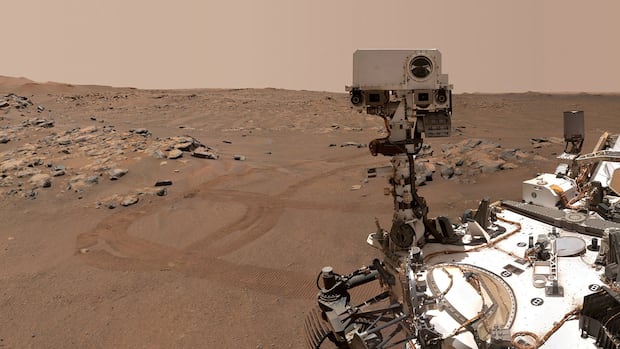NASA’s Perseverance rover has uncovered potential traces of ancient microbial life on Mars within a rock sample dating back billions of years. The discovery, outlined in a recent study, offers compelling evidence that Mars may have once supported life.
Since its touchdown on the Martian surface in 2021, the rover has been diligently exploring Jezero Crater, a region that was once submerged in water and housed an ancient lake basin. By collecting samples of rock and regolith, Perseverance has been conducting thorough analyses using its onboard instruments.
The newly obtained sample, named the Sapphire Canyon sample, was procured from the Bright Angel rock formation, characterized by fine-grained mudstones and coarse-grained conglomerates. According to Joel Hurowitz, a planetary scientist from Stony Brook University who spearheaded the study, the sedimentary rocks exhibit a “potential biosignature.”
Two minerals identified in the sample, vivianite and greigite, are believed to have formed from chemical reactions between mud and organic matter within the Bright Angel formation. On Earth, similar reactions are often attributed to microbial activity, where organisms metabolize organic matter to produce new minerals.
Hurowitz, while acknowledging the possibility of non-biological processes causing such reactions, emphasized the need for caution in conclusively identifying these features as signs of ancient life. Mars, with its watery past, is speculated to have once been habitable, potentially fostering microbial life in locales like Jezero Crater.
The Sapphire Canyon sample, collected in July 2024 from rocky outcrops near Neretva Vallis, provides a valuable case study for scientists to probe further into the origins of potential biosignatures on Mars. As Hurowitz suggests, future research and the eventual return of samples to Earth will be crucial in unraveling the mysteries surrounding these intriguing features.



